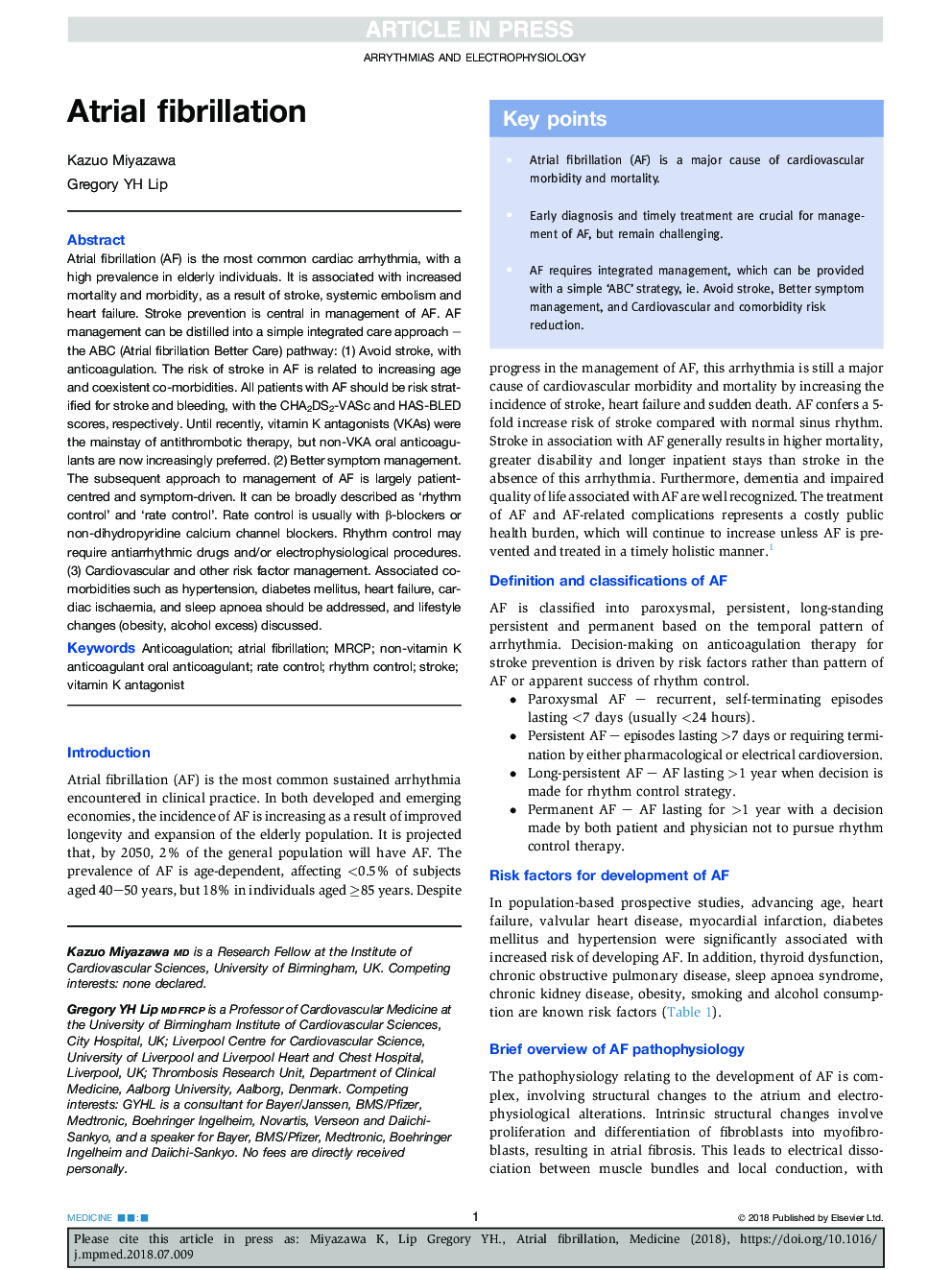| کد مقاله | کد نشریه | سال انتشار | مقاله انگلیسی | نسخه تمام متن |
|---|---|---|---|---|
| 11018240 | 1720249 | 2018 | 5 صفحه PDF | دانلود رایگان |
عنوان انگلیسی مقاله ISI
Atrial fibrillation
ترجمه فارسی عنوان
فیبریلاسیون دهلیزی
دانلود مقاله + سفارش ترجمه
دانلود مقاله ISI انگلیسی
رایگان برای ایرانیان
کلمات کلیدی
موضوعات مرتبط
علوم پزشکی و سلامت
پزشکی و دندانپزشکی
پزشکی و دندانپزشکی (عمومی)
چکیده انگلیسی
Atrial fibrillation (AF) is the most common cardiac arrhythmia, with a high prevalence in elderly individuals. It is associated with increased mortality and morbidity, as a result of stroke, systemic embolism and heart failure. Stroke prevention is central in management of AF. AF management can be distilled into a simple integrated care approach - the ABC (Atrial fibrillation Better Care) pathway: (1) Avoid stroke, with anticoagulation. The risk of stroke in AF is related to increasing age and coexistent co-morbidities. All patients with AF should be risk stratified for stroke and bleeding, with the CHA2DS2-VASc and HAS-BLED scores, respectively. Until recently, vitamin K antagonists (VKAs) were the mainstay of antithrombotic therapy, but non-VKA oral anticoagulants are now increasingly preferred. (2) Better symptom management. The subsequent approach to management of AF is largely patient-centred and symptom-driven. It can be broadly described as 'rhythm control' and 'rate control'. Rate control is usually with β-blockers or non-dihydropyridine calcium channel blockers. Rhythm control may require antiarrhythmic drugs and/or electrophysiological procedures. (3) Cardiovascular and other risk factor management. Associated co-morbidities such as hypertension, diabetes mellitus, heart failure, cardiac ischaemia, and sleep apnoea should be addressed, and lifestyle changes (obesity, alcohol excess) discussed.
ناشر
Database: Elsevier - ScienceDirect (ساینس دایرکت)
Journal: Medicine - Volume 46, Issue 10, October 2018, Pages 627-631
Journal: Medicine - Volume 46, Issue 10, October 2018, Pages 627-631
نویسندگان
Kazuo Miyazawa, Gregory YH. Lip,
